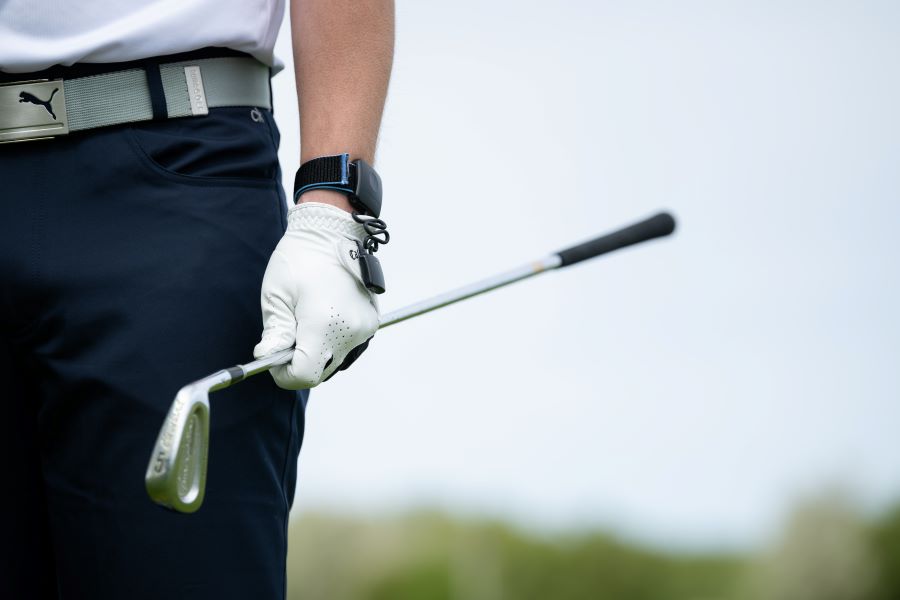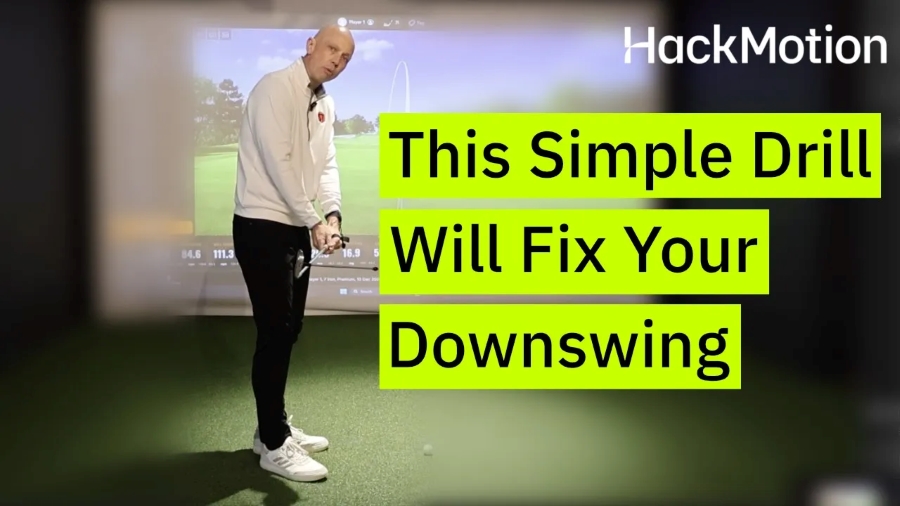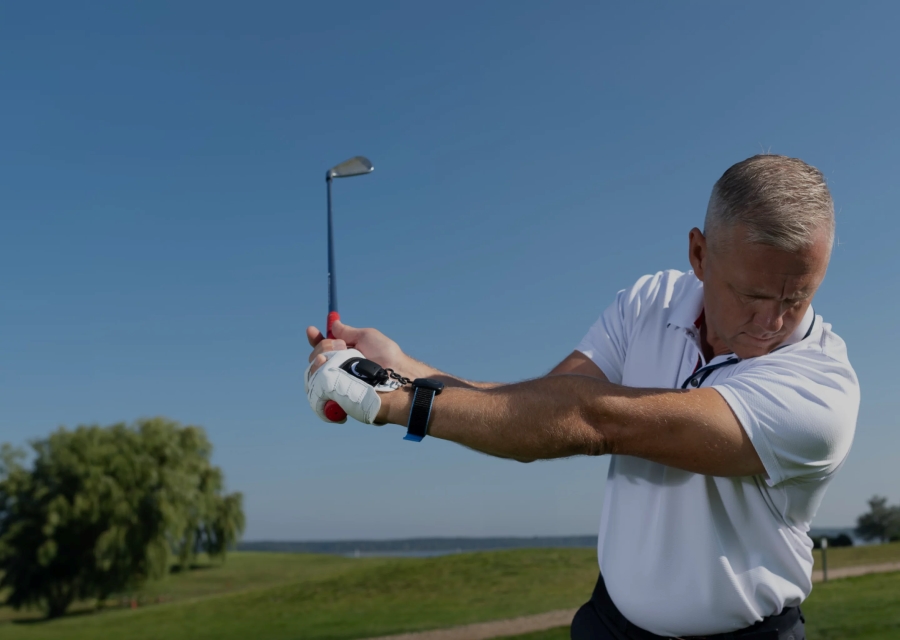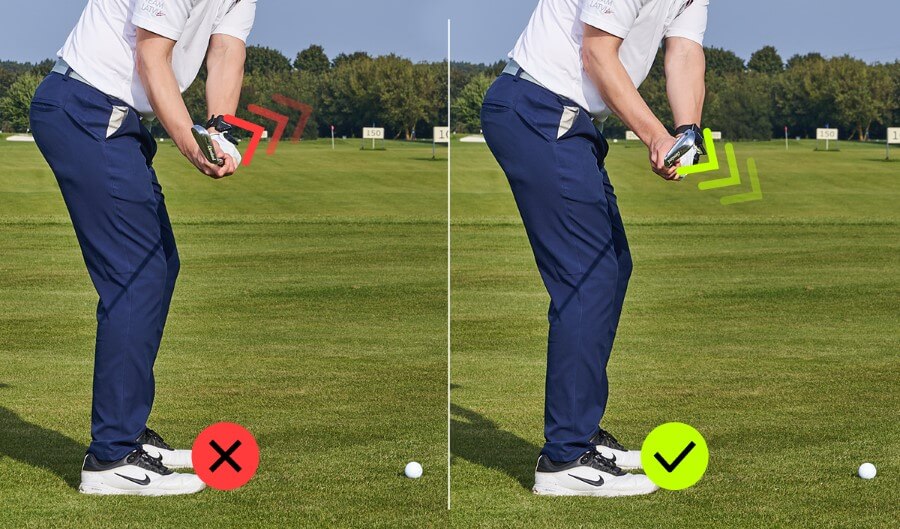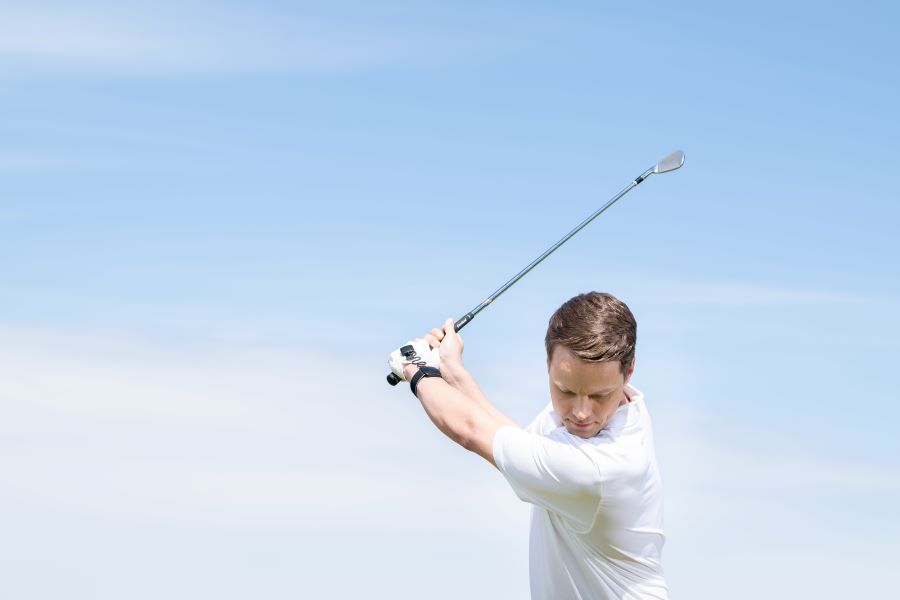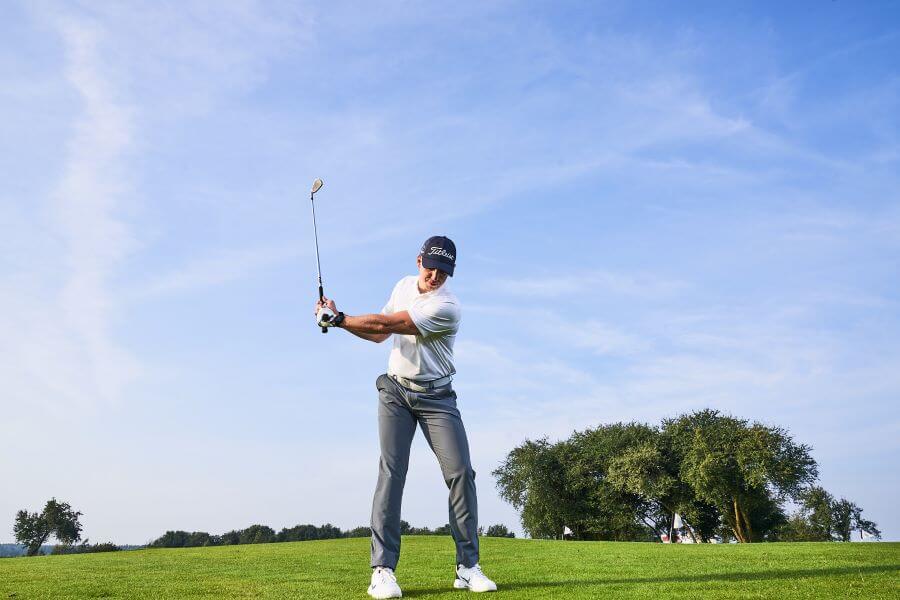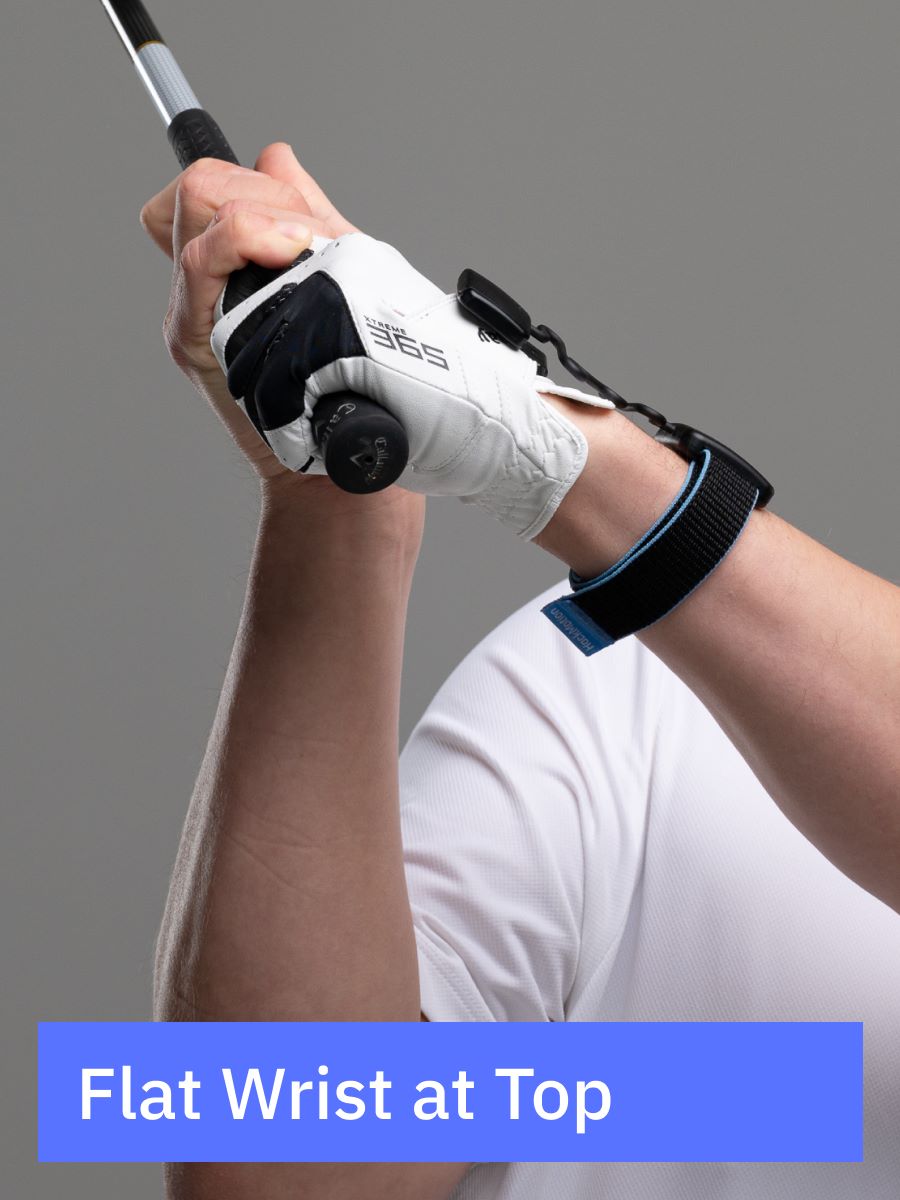Trail Wrist Role in Golf – The Holy Grail of Great Ball Striking
At HackMotion, we deal a lot with data from the lead wrist. The lead wrist data is often easier for golfers to see, understand, and feel.
However, this doesn’t mean we can ignore the trail wrist completely.
The trail wrist in golf plays a crucial role. Interestingly, the trail wrist is also your dominant wrist, which can sometimes help narrow down performance issues and fixes related to its position.
After analyzing more than 1,000,000 swings from both amateur and professional golfers, we’ve identified clear patterns in how the trail wrist functions.
Let’s take a closer look at the trail wrist’s role in golf and see how applying this information can help improve your ball striking.
Trail Wrist Role in Golf Swing – Key Takeaways
- The key movement is increasing trail wrist extension in the downswing and maintaining it at impact.
- When we look at lead wrist extension, it decreases on the downswing, making the trail and lead wrist work opposite of each other to promote consistent impact positions.
- At impact, the trail wrist position should ideally be 10 to 15 degrees more extended than at address.
- HackMotion is like having a coach on your wrist to measure wrist angles and ensure accuracy – wear it on either wrist.
If it’s easier for you to see a video of how the trail wrist works in your game, here is a complete guide that will ensure you are on the right track.
Contents
Optimizing Trail Wrist Movement in Your Golf Swing
Keep the Trail Wrist Extended Through the Swing
When we look at the lead wrist in golf, the goal is always to remove extension on the downswing and through impact.
However, with the trail wrist, things are different. The trail wrist requires you to add extension as you move from the top of the backswing through impact.
At the top of your backswing, the trail wrist should be extended or cupped.
As you move through impact, the trail wrist increases in extension even more. When the club is parallel to the ground, it should reach its maximum extension.
When you look at the lead wrist, you’ll notice that it is flexed. The extension in the trail wrist allows for flexion in the lead wrist.
Rotate the Body as the Trail Wrist Extends
The best players in the world do everything they can to square the clubface at the top of their swing so that they can rotate through with all the power they have.
However, if the trail wrist is not in the right position and it is more flat or flexed than extended, you won’t be able to rotate through the golf ball with the same speed or power. The downswing will instead be spent squaring the clubface.
If your trail wrist is extended at the top of the swing and the clubface is square, the body can fire through toward the target.
Let the Trail Wrist Extend at Impact
Your trail wrist must stay extended as your golf club moves through the impact position. A trail wrist extended through impact lets you get more power and keep the clubface square.
On average professional golfers have 10-20 degrees more extension at impact than their address position.
Wearing the HackMotion can help you see where your wrists are at setup, how they change through the swing, and what they are at impact again.
To get a general idea of what this looks like, grip a golf club and notice how your trail wrist may be slightly extended or flat.
As you swing back in slow motion, does that position get more extended, or does it stay flat? You’ll want to see a little extra extension and then even more as you swing down through the golf ball.
Common Mistakes in Amateur Swings
Not sure if you have an issue in your golf game with your trail wrist?
You’ll probably notice a lack of distance and inconsistency as the two main culprits.
However, there are a few more specific things you can look for.
This video from Rob Cheney gives you some information on premature uncocking of the wrists – essentially, the scooping of the golf ball at impact. It also discusses excessive flexion, which moves the trail wrist into a flexed position too soon and causes a loss of power.
If you are struggling with the trail wrist, it is likely one of these two very common issues.
Practical Drills for Improving Trail Wrist Motion
Finding a drill that works for you is the best way to improve your wrist position in golf.
Here are a few drills as well as the HackMotion audio feedback that should make it easier to get your wrists in the correct position and focus on that trail wrist.
Trail Hand Open Drill
The trail hand open drill ensures that you uniquely place your trail hand on the shaft to encourage proper movement through impact.
With the trail hand open drill, your flat trail hand will rest against the side of the grip and push the club through the impact position.
This trail hand positioning will help improve any issues with flipping the wrist, as it is impossible to do from this position.
Right Elbow Drill
Keeping your right elbow closer to the body on the downswing makes it easier for the wrist to get into an extended position through impact.
The right elbow drill will make it easier to swing from the inside and deliver a square clubface.
HackMotion Feedback Drills
When you determine whether your wrist issues are more severe on the trail or the lead wrist, you can start using HackMotion feedback to correct them.
Decide if sound, feel or both is the easiest way for you to learn and set your HackMotion accordingly.
Set a range for the wrist position, and make sure you can hear the sound played by the HackMotion during your entire backswing and downswing.
The audio feedback works in real time, making it much easier to pinpoint the exact location where your golf swing goes wrong.
Set the range a little wide at first and then narrow it to see a marked improvement in your trail wrist mechanics.
Motorcycle Drill
Although the Motorcycle drill in golf is often thought to be more for the lead wrist, it works just as well for the trail hand.
With the motorcycle drill, you will feel like you are rotating your hands as if revving a motorcycle on the way down.
The motorcycle drill helps you close the clubface properly and maintain it in that position through impact.
Push the Right Palm Down
Without the trail hand in the right position, you may struggle with leaving the clubhead open at impact or with overactive hands.
Luckily, there is a way to fix it with this drill. The drill helps you feel the motion of pushing your right palm down (for the right-handed golfer) as you make your way through impact.
You can do this in slow motion, start to feel what the motion should be like, and eventually see how the wrists play such a big part in your clubface position.
Why Work On the Trail Wrist vs Lead Wrist?
The trail and lead wrists are important in the golf swing. At HackMotion, we have analyzed more than 1,000,000 golf swings of players, and we notice that since the trail wrist is usually the dominant wrist for the player, sometimes it is easier to focus on.
If you struggle with getting the lead wrist in the right position, try working on the trail wrist for a while and see if it improves your game.
Sometimes, all it takes is a mindset change to see the difference.
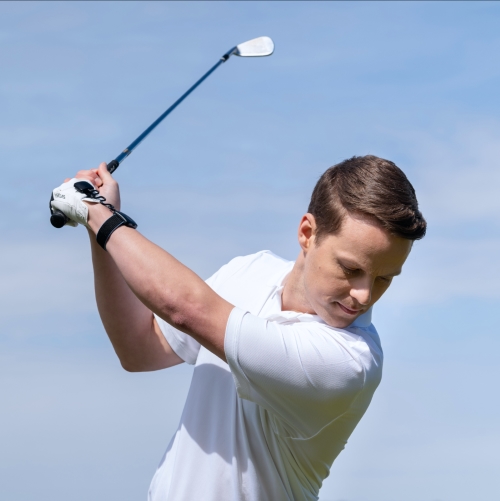
Take control of your golf game by learning wrist mechanics with our FREE wrist motion online guide.
FAQs
Most of the information out there about the trail side in the golf swing deals with the trail arm, not the trail wrist.
However, as a golfer, you should be aware of both the trail arm and the trail wrist because the relationship between the two is quite strong.
What does trail arm in golf mean?
Trail arm in golf means the right arm for the right-handed player or the left arm for the left-handed player. As you swing the golf club through the ball, the trailing arm lags.
What should trail wrist do in a golf swing?
The trail wrist in the golf swing will somewhat mirror the lead wrist. On the backswing, the trail wrist will have considerably more extension than the lead wrist.
On the downswing, that extension will increase slightly before decreasing right before impact. Golfers will have more extension at impact in their trail wrist than at the address.
Should the trail wrist be bent at impact?
After analyzing more than 1,000,000 golf swings, HackMotion has helped us determine that extension of the trail wrist at impact is a great position to be in.
With a bit more extension, it’s easier to flex the lead wrist, compress the ball, and improve ball flight and consistency.
Are their perfect trail wrist measurements with HackMotion?
Remember that, just like with the lead wrist, no exact amount of extension or flexion will guarantee your success.
The trail wrist measurements will vary slightly, but you must follow a pattern of adding extension on the downswing and having more extension at impact than you had at the address.
Final Thoughts
At this point, you should feel more confident about the trail wrist role in your golf swing.
Use HackMotion to work on both trail and lead wrist movement and determine which is most effective for you.





